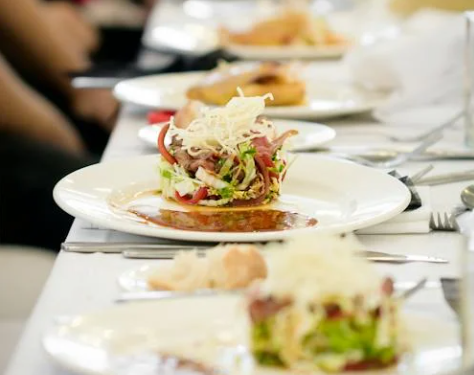Cooking is both an art and a science, and understanding different cooking methods is essential for creating delicious and well-balanced meals. In this article, we’ll explore two popular cooking techniques: sauteing and stir-frying.
Introduction
Mastering sauteing and stir-frying opens up a world of culinary possibilities. These techniques are not only versatile but also efficient, allowing you to whip up flavorful dishes in no time. Let’s delve into the nuances of sauteing and stir-frying and learn how to elevate your cooking game.
Sauteing: The Basics
Sauteing is a cooking method that involves frying food quickly in a small amount of oil over high heat. The key to successful sauteing lies in maintaining constant motion to prevent ingredients from sticking to the pan. With its short cooking time and minimal oil usage, sauteing is perfect for preserving the natural flavors and textures of ingredients.
Stir-Frying: A Staple Technique
Stir-frying is a beloved cooking technique in Asian cuisine, known for its speed and versatility. This method involves cooking ingredients in a hot pan or wok with a small amount of oil while continuously stirring or tossing them. Stir-frying allows for even cooking and the development of complex flavors, making it ideal for showcasing fresh produce and bold spices.
Heat Control and Timing
Both sauteing and stir-frying require precise heat control and timing to achieve the desired results. The high heat used in these techniques helps to seal in moisture and create a flavorful crust on the exterior of ingredients. However, it’s crucial to avoid overheating the oil, as this can lead to burning and off-flavors.
Equipment Needed
To saute or stir-fry effectively, you’ll need the right equipment. A good quality skillet or wok with a flat bottom and sloped sides is essential for even heat distribution and easy stirring. Additionally, invest in a sturdy spatula or pair of tongs for handling ingredients with ease.
Oil and Seasoning
Choosing the right oil is crucial for both sauteing and stir-frying. Opt for oils with high smoke points, such as canola, peanut, or sesame oil, to prevent burning and impart a subtle flavor to your dishes. Seasoning plays a vital role in enhancing the taste of sauteed and stir-fried dishes, so don’t skimp on herbs, spices, and aromatics.
Ingredient Preparation
Proper ingredient preparation is key to successful sauteing and stir-frying. Ensure that your ingredients are cut into uniform pieces to ensure even cooking. Additionally, patting ingredients dry with a paper towel before cooking helps to remove excess moisture and promote browning.
Cooking Techniques
Sauteing and stir-frying employ different cooking techniques to achieve distinct results. In sauteing, ingredients are cooked quickly over high heat, resulting in tender and lightly browned textures. Stir-frying, on the other hand, involves constant stirring or tossing to ensure that ingredients cook evenly and develop a caramelized exterior.
Versatility and Adaptability
One of the greatest strengths of sauteing and stir-frying is their versatility. These techniques can be applied to a wide range of ingredients, from vegetables and meats to noodles and rice. Experiment with different flavor combinations and cultural influences to create unique and memorable dishes.
Nutritional Considerations
While sauteing and stir-frying are great for preserving the natural flavors and textures of ingredients, it’s essential to consider the nutritional aspects of these cooking methods. Both techniques require a small amount of oil, so be mindful of portion sizes and opt for healthier cooking oils when possible.
Flavor Development
Sauteing and stir-frying are excellent methods for developing complex flavors in dishes. The high heat used in these techniques helps to caramelize sugars and proteins, resulting in rich and robust flavors. Experiment with different seasonings and cooking times to discover new flavor combinations that tantalize your taste buds.
Common Mistakes to Avoid
Like any cooking technique, sauteing and stir-frying come with their fair share of pitfalls. Avoid common mistakes such as overcrowding the pan, using too much oil, or cooking over low heat. With practice and patience, you’ll soon master the art of sauteing and stir-frying like a pro.
Culinary Creativity
Don’t be afraid to get creative in the kitchen! Sauteing and stir-frying offer endless opportunities for culinary experimentation. Whether you’re incorporating exotic ingredients or putting a twist on a classic recipe, let your imagination run wild and see where it takes you.
Health and Safety
While sauteing and stir-frying are relatively safe cooking methods, it’s essential to practice good kitchen hygiene and safety protocols. Always use caution when working with hot oil and ensure that your cooking area is well-ventilated to prevent the buildup of smoke and fumes.
Conclusion
In conclusion, mastering the art of sauteing and stir-frying is a valuable skill for any home cook. By understanding the principles of heat control, timing, and ingredient preparation, you can create delicious and flavorful dishes that will impress family and friends alike. So roll up your sleeves, fire up the stove, and let the sizzle of sauteing and stir-frying ignite your culinary creativity!

FAQs
- Can I use olive oil for sauteing and stir-frying?
- While olive oil has a lower smoke point compared to other oils, it can still be used for sauteing and stir-frying over medium heat. Just be mindful not to overheat the oil to avoid burning.
- What’s the difference between sauteing and pan-frying?
- Sauteing involves cooking food quickly in a small amount of oil over high heat, while pan-frying requires more oil and longer cooking times to achieve a crispy exterior.
- Can I stir-fry frozen vegetables?
- Yes, you can stir-fry frozen vegetables, but be sure to thaw them first and pat them dry to remove excess moisture before cooking.
- How do I know when the pan is hot enough for sauteing or stir-frying?
- You can test the heat of the pan by adding a few drops of water. If the water sizzles and evaporates immediately, the pan is ready for cooking.
- What’s the best way to clean a wok or skillet after sauteing or stir-frying?
- Allow the pan to cool slightly, then rinse it with hot water and use a soft sponge or brush to remove any food residue. Avoid using harsh abrasives that can damage the seasoning of the pan.




